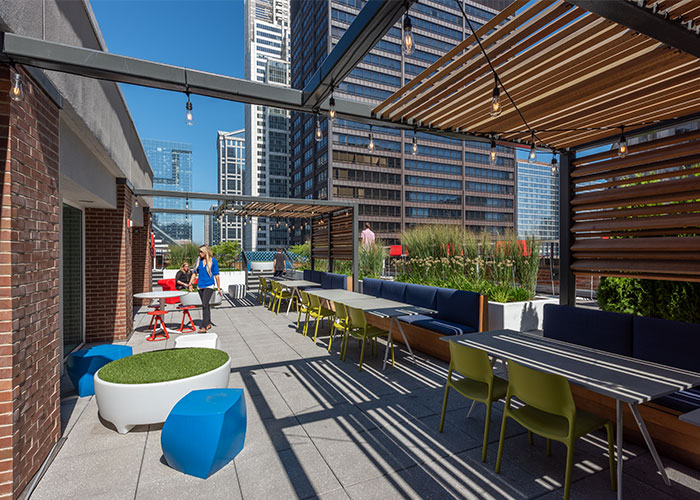
In today’s competitive market, recruiting and retaining talent is a top priority. Investing in that talent means companies are continually looking for ways to improve their quality of life. Happy, healthy employees are more engaged and productive employees. A win-win situation for everyone.
With many employees spending an average of eight hours per day indoors, health and wellness initiatives continue to rise.
What if you could use an existing asset to help employees? WELL certification looks at your built environment to energize and rejuvenate your workforce in fundamentally healthy ways. This level of certification declares your commitment and investment to improving holistic health among your employees.
What is WELL?
The design industry has normally focused on how to make the natural environment healthier through design and construction practices. Through the International WELL Building Institute, WELL instead focuses on how to make people healthier through design, construction and operations practices. This rating system was created after years of research by medical professionals, design industry professionals and scientists. All the information included in the rating system is based on good, old fashioned evidence meaning both you and your employees will see a return on your investment.
10 WELL Certified Building Concepts to Measure the Wellness Level of Your Building
- Air –We breathe 15,000L of air each day. This concept focuses on using design strategies to minimize exposure to contaminants and promote clean air. The HVAC system is designed to provide exceptional filtration, ventilation, and microbe/mold control.
- Water – Not just for fish! Water is essential for transferring nutrients throughout our body and regulating our internal temperature. WELL buildings promote building occupants to consume the recommended amount of water each day by increasing water quality and improving taste and accessibility.
- Nourishment – Nutrition is paramount to good health. WELL helps building occupants to:
- Have easily accessible fruits and vegetables
- Avoid artificial/processed foods
- Be aware of food allergies and prevent cross-contamination of food
- Light – Lighting impacts our sleep/wake cycles (circadian rhythm). Good lighting design/technology can promote healthy sleep patterns which is foundational to our overall health.
- Movement – This is not just centered on exercise, although that is also important! This feature seeks to promote more ways to be active throughout the work day through various furnishings and architectural features:
- Utilizing sit/stand workstations
- Emphasizing the use of stairs over elevators and making them more easily accessible.
- Thermal comfort –WELL reduces the reoccurring “it’s too cold/hot/humid/dry in here!” statements and give occupants options to regulate their own temperature preferences (within reason).
- Sound – This can be the biggest annoyance or distraction in the workplace. There are certain parameters set for WELL buildings to provide options for focused, quiet work areas away from louder, more social and collaborative areas.
- Materials – Because no one loves the smell of paint drying, WELL reduces the exposure we have to ingredients/compounds known to be toxic.
- Mind – Mental health is often taboo, but it is paramount to health. “Mental health is not simply the absence of a mental health condition. Rather, it is a state of well-being in which individuals are able to live to their fullest potential, cope with the normal stresses of life, work productively and contribute to their community.”
- Community – Promote a transparent, inclusive community within your space/organization.
Test WELL Building Concepts in Small Ways & Still Make A Big Impact!
Through WELL, you can invest in cost-effective changes that yield a high return through positive impacts that improve the overall health of your organization.
- Repurpose an off-the-beaten-path conference room into a “quiet” room for the times when someone needs a quick refresh.
- Add some plant life – access to nature reduces stress!
- Create some social zones in your space and encourage people to eat lunch together – while maybe providing some fresh fruit and vegetables once a week!
- As a company, commit to offering paid time off for volunteer hours, or schedule a work day for your group to volunteer together for a charitable cause.
Learn More
Visit the International Well Building Institute’s website at: https://www.wellcertified.com/en.
